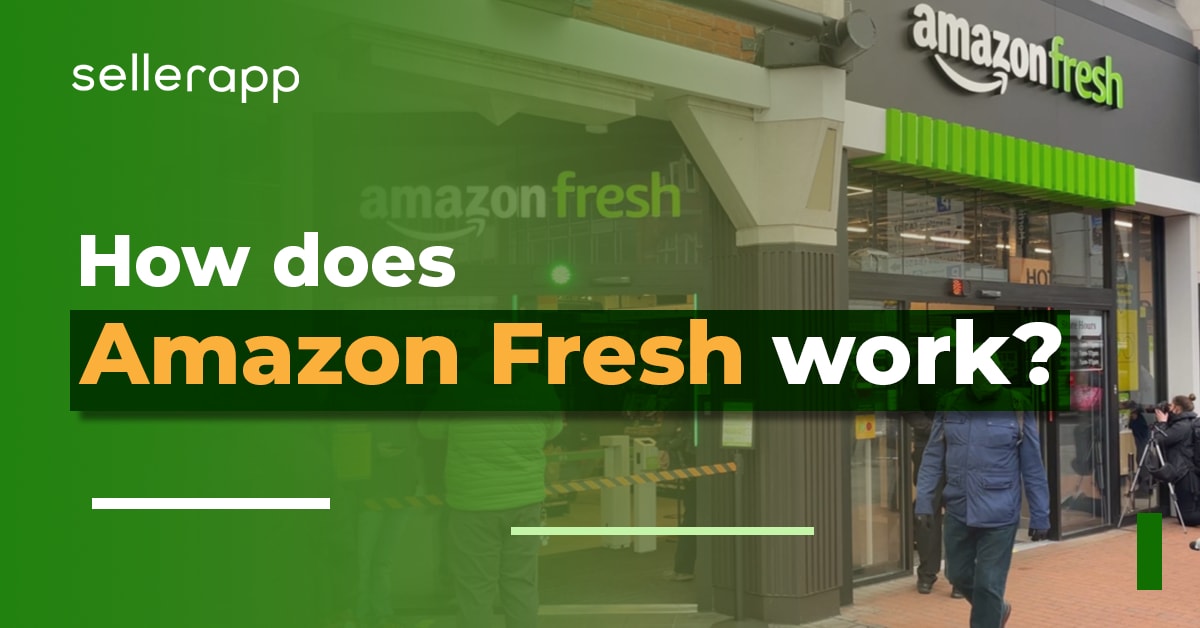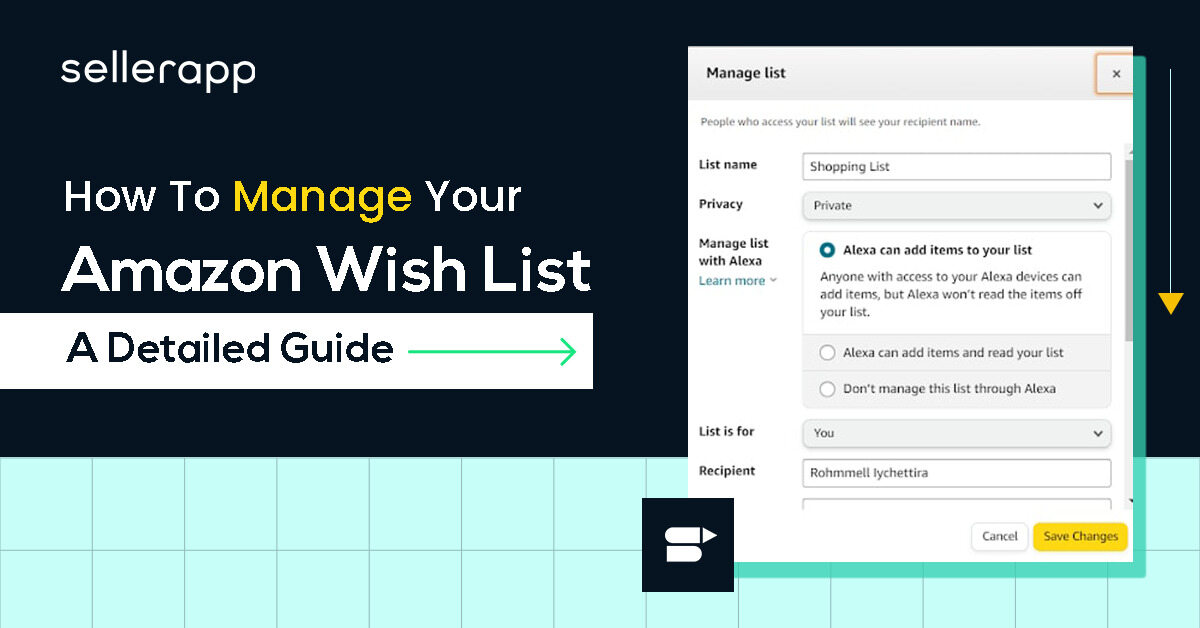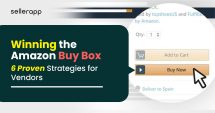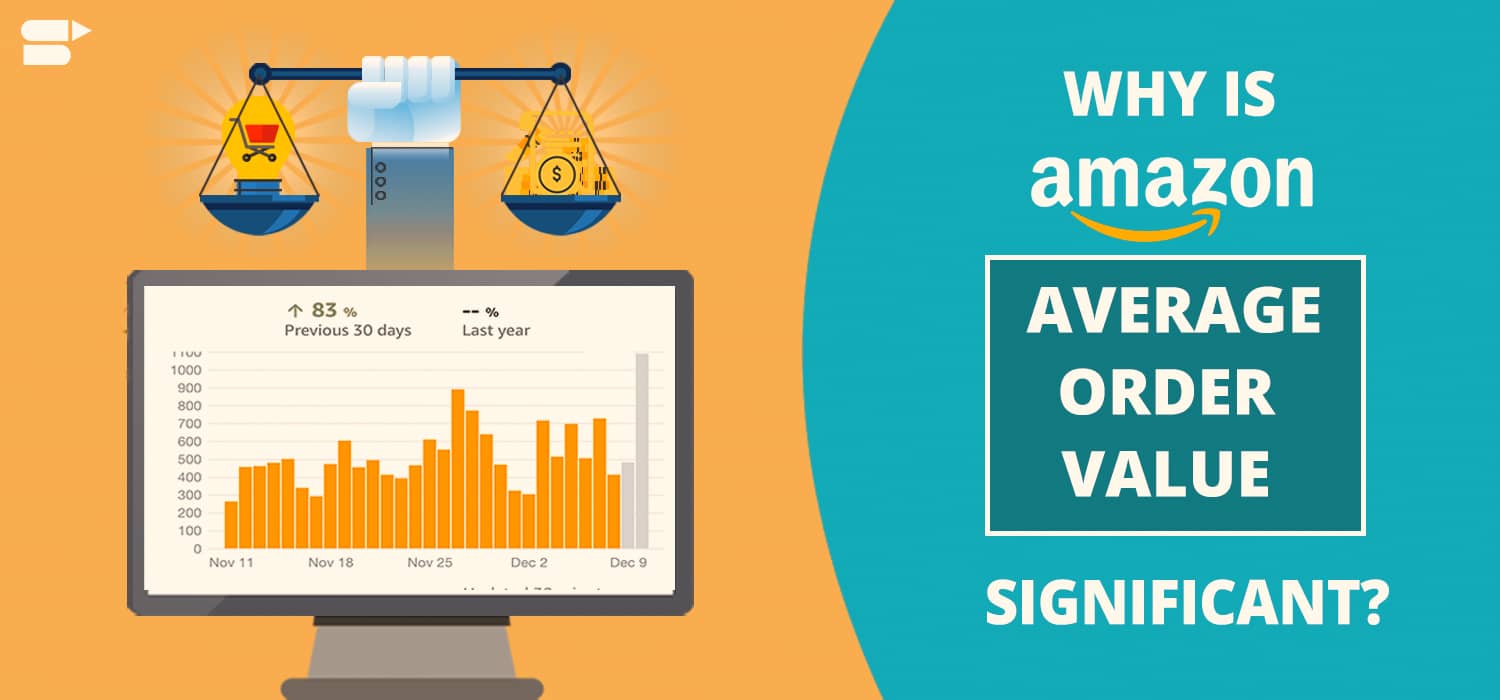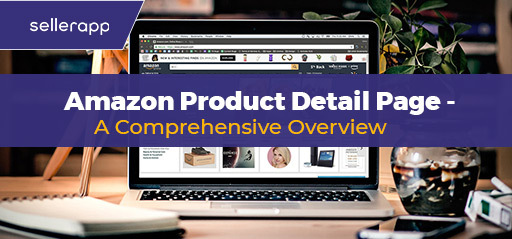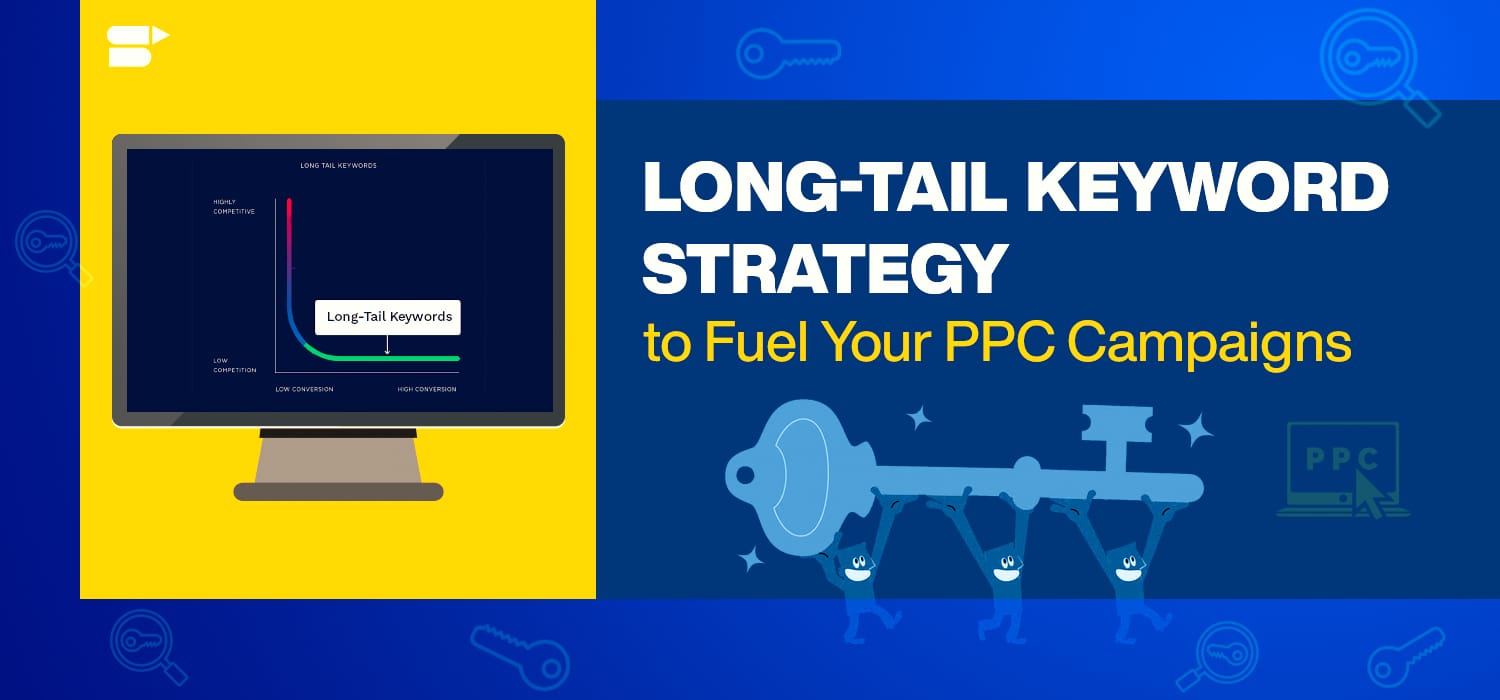Amazon 1P vs 3P Selling: Is 3P the Better Choice for Your Business?
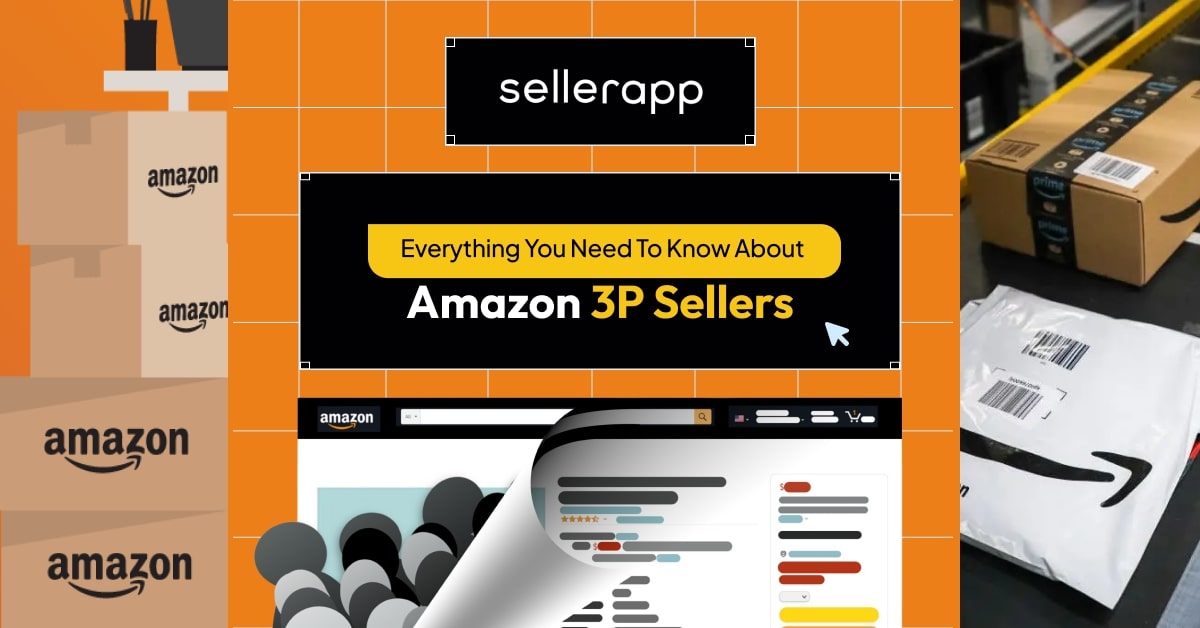
Are you considering becoming an Amazon 3P seller (Amazon Third-Party Sellers) but unsure where to start? You’re not alone. With the rapid growth of third-party sellers on the platform, now is an excellent time to establish your brand on Amazon. However, succeeding as a 3P seller requires careful planning and execution.
In this comprehensive guide, we’ll walk you through the key steps and considerations to effectively launch and grow your Amazon 3P selling business. From setting up your Seller Central account to optimizing your listings and advertising, we’ll cover the essential elements for success.
Quick Guide:
- What is Amazon 1P and 3P?
- Understanding Amazon 1P Sellers
- What is a 3p seller on Amazon?
- How to Become an Amazon Third Party Seller?
- Amazon third-party seller scams
- Can you be both a 1P and 3P seller on Amazon?
- Final Thoughts
Amazon 1P vs 3P: What is Amazon 1P and 3P?
Understanding Amazon 1P Sellers
In the Amazon 1P vs 3P debate, 1P sellers or first-party sellers operate in a wholesale relationship with Amazon, selling products directly to the ecommerce giant.
The ecommerce giant then brands it under their name and sells it to a customer. Your products will have the ships and sold by Amazon.com label on the product details page.
Ultimately, you will sell to Amazon in a wholesale capacity. However, to become an Amazon Vendor and sell on Vendor Central, you will need to be invited by Amazon.
Pros and Cons of being an Amazon 1P seller
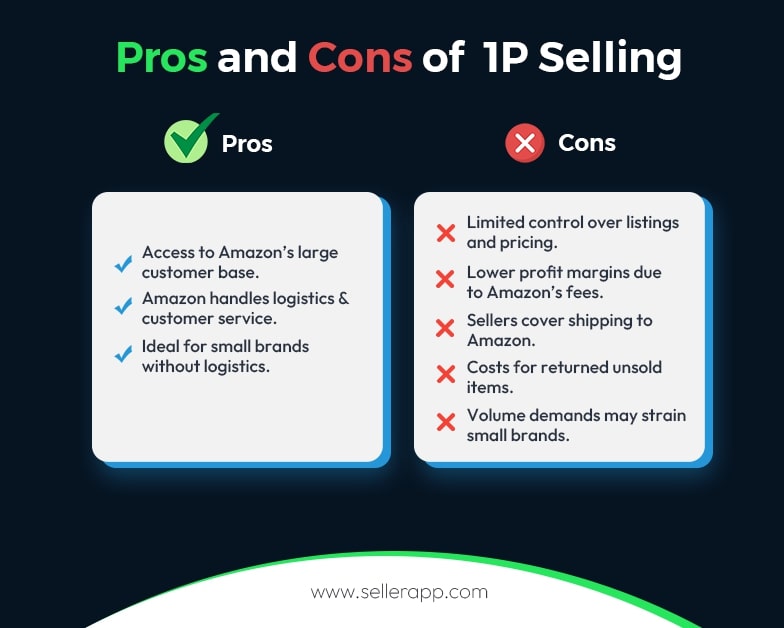
When you’re in a 1st party relationship with Amazon, you do have some key advantages:
- Direct access to Amazon’s massive customer base. This essentially means that you will be sent purchase orders as soon as you become an Amazon vendor.
- Additionally, you don’t have to handle most of the logistics, customer service, or fulfillment as Amazon takes care of that. One major advantage in the Amazon 1P vs 3P comparison is that 1P sellers can leverage Amazon’s powerful operational capabilities, such as fulfillment and customer service.
- Being a vendor can be particularly beneficial for smaller brands without robust in-house operations.
Of course, there are limitations as well:
- Although there are benefits to being a 1P Amazon seller, there is a tradeoff here. You do have less control over your product listing, and overall brand. Ultimately, Amazon will dictate the terms.
- You will not have control over pricing or the profit margin and Amazon may add additional markups and rake in more profits.
- You will be responsible for paying shipping and handling fees to get your products to Amazon’s warehouses. Additionally, you may also have to deal with other fees if you avail Amazon’s services which can all further affect your profit margin.
- Amazon returns the unsold items to you, which can place a massive burden on your business.
- Moreover, Amazon may have certain volume requirements to maintain its status as a vendor. Unless you have a killer production unit, this can put pressure on your production, resulting in more costs and lower margins.
What is a 3P seller on Amazon?
Amazon 3P Sellers or Amazon Third Party Sellers, on the other hand, refer to professionals who sell their products on the Amazon marketplace through Seller Central. Unlike Amazon 1P sellers, Amazon 3P Sellers don’t have the limitation of being invited by Amazon to become a seller. You can directly sign up and start selling.
The seller essentially lists the products on Amazon and has the option to fulfill the order using Amazon’s services (FBA) or via their supply chain/distribution network (FBM).
Pros and Cons of being an Amazon 3P seller
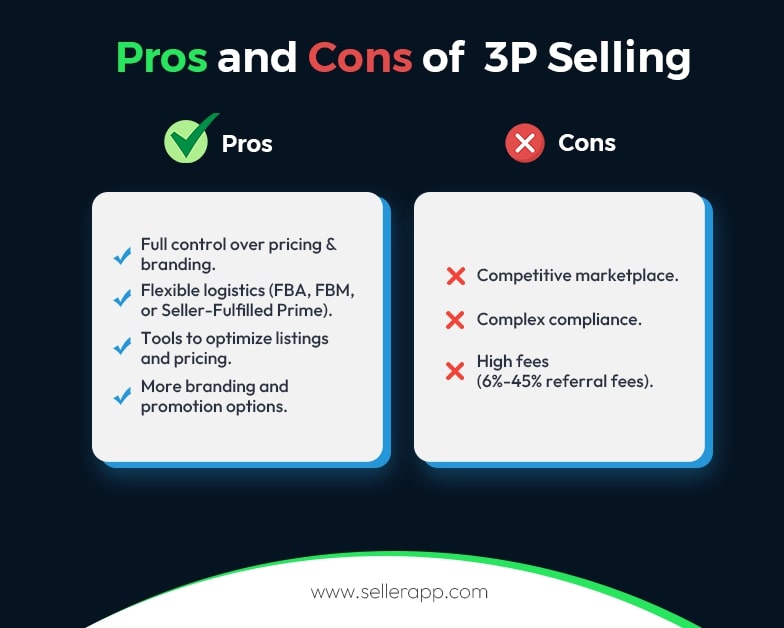
Here are some key advantages of being a 3P seller on Amazon:
- The primary benefit of being an Amazon 3P seller is control. Amazon 3P Sellers have complete control over their product, pricing/profit margin, marketing, inventory management, customer relations, fulfillment, and everything else.
- By becoming an Amazon 3P Seller, you have several fulfillment options such as Amazon FBA, FBM, and Seller-Fullfilled Prime to handle your order fulfillment, giving you more flexibility to optimize your logistics and shipping costs.
- Amazon 3P sellers get access to advanced features that can help you enhance your product listings, automate your pricing, and tools to help you gain deeper insights into how to optimize your business and be more strategic and competitive in the Amazon marketplace.
- You also get to focus on effectively building your brand identity and customer relationships on the Amazon platform. You have more flexibility to create unique promotions, bundles, and even content to differentiate your offer and stand out.
Amazon 3P Sellers Issues/Challenges
Here are some of the Amazon Third-Party Seller challenges:
- The vast number of product listings on Amazon can make it difficult for brands to stand out and scale effectively.
- Amazon 3P Sellers have to navigate compliance issues and any intellectual property rights which can require significant resources and expertise.
- Amazon may impose higher fees or more restrictions which can significantly affect an Amazon 3P seller’s profit margin.
Here are some of the most common Amazon 3p seller fees: Individual Plan: $0.99/item; Professional Plan: $39.99/month; Referral fees: 6%-45% (avg. 8%-15%); FBA Fulfillment fees: ~$2.50/unit (standard); Storage fees: monthly based on volume; Closing fees: ~$1.80/item (media).
Ultimately, the 3P approach is better suited for brands seeking greater autonomy and brand-building on the Amazon marketplace. The 1P model on the other hand is better suited for brands that prioritize access to Amazon’s vast customer base and are willing to cede some control in exchange for Amazon handling the operational logistics.
How to Become an Amazon Third Party Seller?
61% of all paid units on Amazon were sold by Amazon 3P sellers in the first quarter of 2024. This highlights the significant growth and importance of Amazon 3P Sellers on the ecommerce platform.
Therefore, if you’re looking to establish a brand, now is an excellent time to pivot to third-party selling, as there is tremendous potential for success.
To effectively establish your third-party Amazon selling business, we recommend you follow these steps:
Step 1: Set up an Amazon Seller Central account
This is where you’ll manage all of your product listings, inventory, orders, and much more. This is essentially the central hub of all of your Amazon business operations. To get started you will need to provide business information, contact details, and tax information and agree to all of Amazon’s seller policies.
Step 2: Decide on your selling plan
Fundamentally, Amazon offers two types of selling plans – an individual selling plan for those selling fewer than 40 items a month or a professional plan for high-volume sellers. If you’re planning on setting up a full-fledged business, then it’s best to invest in the professional plan from the get-go.
However, if you’re planning on testing the waters to see if 3P selling is a good fit, then we recommend you sign up for the individual plan.
Once you have an active account you will have to complete your seller profile. This is crucial as this profile will help your customers see information about your company, review feedback from your other customers, and understand your return/shipping policies. We recommend you take your time and get all of this right as this will help your customer understand and align with your company vision/mission.
Step 3: Prepare your products for sale
Now, for the most important part. Talk to your manufacturers and get everything sorted. Ideally, you should do this while you’re setting up your account.
When everything is sorted on the product side of things, you’ll have to create a listing. Create listings with compelling titles, bullet points, images, and descriptions. Additionally, you will need to get a unique product identifier like a UPC for each Product. Most importantly, sign up to the Brand Registry and access enhanced brand content to make your listing stand out.
Unless you’re extremely lucky, you will have competition when selling your product. To gain an edge, you need to go all out on product development and even pricing. You will need to price competitively to win the buy box. Of course, make sure that you are ultimately still profitable.
Eventually, you will be subject to pricing wars, so you will need to use a third-party price tracking tool to help you switch prices effectively.
Step 4: Choose your fulfillment method
Next up is either handling the shipping yourself (FBM) or automating it through Amazon (FBA). FBA adds additional credibility and convenience as Amazon stores, picks, packs, and ships your order. Moreover, even customer service and returns processing are usually handled by Amazon.
Step 5: Advertise
Once your products are live, Amazon 3P Sellers can’t wait for people to stumble on your listings and buy your product. You will have to actively market and promote your listings to elevate their organic ranking in the Amazon search results.
One of the best ways to gather immediate visibility would be to use Amazon’s PPC and advertise your product. Use Amazon Sponsored ads and other marketing tools to help you succeed on the platform.
Can you be both a 1P and 3P seller on Amazon?
Technically, Yes. Nothing is preventing you from being a vendor (Amazon 1P Seller) and a seller (Amazon 3P Seller). However, it’s important to master one method of selling on the platform before expanding your business.
Of course, from assisting several thousands of sellers, we can state that this hasn’t been done. Businesses usually stick to one type of selling on the ecommerce platform. Businesses have gone the multichannel route but have still stuck to one type. For example, being a 3P seller on Amazon, Walmart, Lazada, Shopee, etc.
Amazon Third Party Seller Scams
Unfortunately, there is a growing threat of Amazon third-party seller scams. These scams have been making the news for the past decade. For example, the most common scam in recent years would be the brick-in-the-packaging scam. Additionally, here are some common scams associated with Amazon 3P Sellers that both buyers and new sellers should be aware of:
- Selling counterfeit products or fake products.
- Highjacking reviews by taking over old listings with 5-star reviews and replacing the products with fakes. Although this is relatively hard to pull off, it does happen.
- Advertising popular products at low prices (bait and switch) and then redirecting buyers to more expensive items when they try to order.
- Some Amazon 3P sellers have also been known to create multiple seller accounts to offer high-ticket products repeatedly, collect payments, and disappear before angry buyers request refunds.
To avoid falling victim, customers should:
- Always, check the seller’s ratings and reviews, carefully, not just the product ratings. We recommend you read through the entire review before making a purchase.
- Be wary of prices that seem too good to be true. It usually is!
- If you instinctually feel there’s something wrong, cross reference the product description with the manufacturer’s information or check for the brand’s online footprint (website, social media handle, reviews on review sites, etc, subreddits, etc.)
- If you’re feeling skeptical about the product, download the Fakespot browser extension to analyze the legitimacy of product reviews.
- Although this isn’t a hard and fast rule, try to stick to fulfilled by Amazon products. As scammers try to take advantage of FBM.
If you are scammed, then the first step is to contact the seller directly. You’ll need this later. If that fails, then you can always request refunds through Amazon’s A-to-Z Guarantee program. So, you don’t need to panic. However, it’s important to be vigilant and not share personal information during any communication.
Amazon has also been criticized for being way too slow when it comes to policing scammers and being an ecommerce giant, they are too massive to properly monitor all Amazon 3P sellers. So, you will have to do your due diligence before purchasing a product.
What do you need to consider before you become an Amazon 3P seller?
Amazon is dynamic, with changes being made regularly, this is why it’s important to consider the following operational changes and requirements before becoming an Amazon 3P (third-party) seller:
Fulfillment options
As a 3P seller, you will have to choose between Fulfillment by Amazon (FBA), Fulfillment by Merchant, or from another 3PL (Third-Party Logistics) Provider. Each of these fulfillment options comes with its own set of benefits and considerations.
This essentially means that you will have to dive deep into each, understand the inventory management, shipping, and costs, and figure out which method works best for your business.
Performance requirements
Amazon also imposes performance requirements on Amazon 3P sellers. You have an account health in your Amazon seller account. If you are hit with the same issues several times, you can expect to be suspended or worse be subject to account termination. Therefore, we recommend you keep an eye on the account health section and improve it as much as possible.
Here are some requirements to keep an eye on:
- Order defect rate should be less than 1%
- Pre-fulfillment cancelation rate should be less than 2.5%
- Late shipment rate should be less than 4%
Operational complexity
Unlike the 1P model, you will be responsible for all aspects of selling, including inventory management, pricing, advertising, customer service, and more. This requires way more time and resources than the vendor model.
You need to sort the various aspects and constantly optimize each process to help you succeed.
Cash flow impact
To be a successful 3P seller, you will need cash flow. After all, as a 3P seller, you only get paid when a product is shipped, unlike the 30-60 day payment for a 1P vendor. Because the cash flow can be unreliable, you will need to prepare for all challenges.
Brand Protection
As a 3P seller, we recommend you enroll in the Amazon Brand Registry as doing so will help you protect your brand and intellectual property on the platform. Overall, the 3P model offers more control and potentially high margins. However, you are also subject to more risks. To prevent any trademark/copyright or any violations for that matter, it’s always best to make sure to have some form of brand protection.
Final Thoughts
Ultimately, to succeed in Amazon’s dynamic ecosystem, you need to be extremely adaptable and agile. To succeed as a 3P seller, you will need to take advantage of Amazon PPC and more importantly, ensure that your products deliver a positive experience to your customers.
This would mean that you’ll need to constantly refine your products based on customer reviews and feedback.
When it comes to what is better for you, 1P or 3P, it’s not a straightforward answer as there are a ton of factors to consider. We urge you to go through the pros and cons of each method of selling and then decide which one makes the most sense for your business. Consider the size of your business, the level of control, the involvement you want to have, any existing fulfillment method, your annual budget, and any specific business objectives.
Recommended Reading:
How to Start Selling on Amazon
Amazon Scams: How Sellers Can Stay Protected?
Amazon Seller Software: Discover the 9 Best Tools to Help You Dominate Your Category
Cross Selling and Upselling on Amazon




